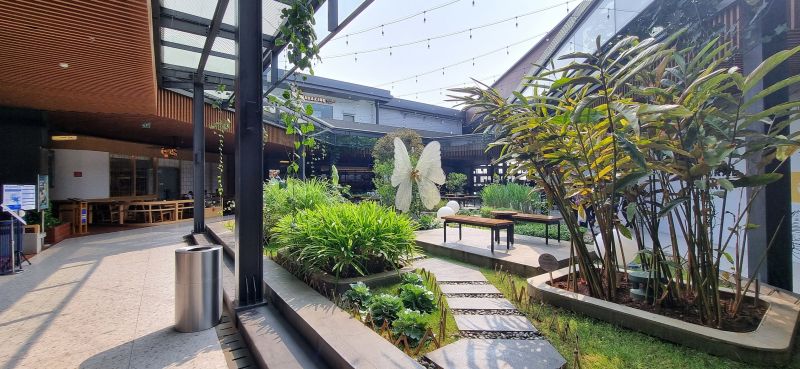Favorite Landscape Edging Products for a Perfect Garden Frame
Choose from popular and trusted landscape edging solutions designed to create neat, defined borders around your garden spaces.
 Landscape edgings serve as essential components in defining garden beds, walkways, and lawn borders, helping to create clean lines and organized outdoor spaces. They come in a variety of materials and styles, allowing homeowners and landscapers to select options that complement the overall design aesthetic. Proper edging not only enhances visual appeal but also aids in controlling grass and weed encroachment, preventing soil erosion, and maintaining clear separation between different landscape elements.
Landscape edgings serve as essential components in defining garden beds, walkways, and lawn borders, helping to create clean lines and organized outdoor spaces. They come in a variety of materials and styles, allowing homeowners and landscapers to select options that complement the overall design aesthetic. Proper edging not only enhances visual appeal but also aids in controlling grass and weed encroachment, preventing soil erosion, and maintaining clear separation between different landscape elements.
Top Overall Option
Flexible Plastic Landscape Edging
Flexible plastic landscape edging offers a versatile and easy-to-install solution suitable for a variety of garden designs. It is lightweight, durable, and resistant to weather conditions, making it a popular choice for DIY projects. Its flexibility allows it to conform to curves and irregular shapes, providing a seamless boundary that can be repositioned if needed. This type of edging is often available in multiple colors and heights, enabling customization to match different landscape styles.
Types of Products For Landscape Edgings
Plastic Edging
Lightweight and flexible, plastic edging is easy to install and available in various colors and heights, suitable for creating clean borders around flower beds and lawns.
Metal Edging
Durable and sleek, metal edging offers a modern look and can be made from steel or aluminum, providing strong boundaries that resist weathering.
Wood Edging
Natural and rustic, wood edging adds warmth to garden borders and can be constructed from logs, planks, or composite materials for longevity.
Concrete Edging
Heavy-duty and permanent, concrete edging provides a solid boundary that is highly durable and can be customized with different textures and finishes.
Stone Edging
Natural stone offers an organic appearance and long-lasting stability, ideal for creating a timeless garden border.
Rubber Edging
Flexible and impact-resistant, rubber edging is often used around playgrounds or for soft landscape transitions, providing safety and durability.
Brick Edging
Traditional and decorative, brick edging creates a classic look and is suitable for defining garden beds with a timeless appeal.
Bamboo Edging
Eco-friendly and lightweight, bamboo edging offers a natural aesthetic and is easy to install for casual garden borders.
Steel Edging
Sturdy and sleek, steel edging provides a modern, minimalist boundary that resists rust and weathering when properly treated.
Composite Edging
Made from a blend of recycled materials, composite edging combines durability with low maintenance, suitable for various landscape styles.
Popular Choices
Widely used for its ease of installation and adaptability to curves, plastic edging remains a popular choice among DIY landscapers.
Known for its durability and sleek appearance, metal edging is favored for creating clean, modern borders.
Popular for its natural look, wooden borders are often chosen for rustic or traditional garden designs.
Concrete edging is selected for its robustness and ability to define garden spaces with a solid presence.
Natural stone continues to be a favored material for its organic appearance and long-lasting qualities.
Offering flexibility and safety, rubber borders are often used in playgrounds and soft landscape areas.
Classic brick borders remain popular for their timeless appeal and versatility in garden design.
Eco-conscious and lightweight, bamboo borders are trending for casual and natural garden styles.
Steel borders are appreciated for their strength and modern aesthetic, suitable for contemporary landscapes.
Low-maintenance and durable, composite edging is gaining popularity for its eco-friendly qualities and versatility.
Choosing the right landscape edging depends on factors such as durability, ease of installation, maintenance requirements, and visual compatibility with existing garden features. Some edgings are designed for temporary use and easy repositioning, while others are meant to be permanent fixtures that withstand weather and foot traffic over time. Whether you prefer a natural look with stone or wood, or a sleek, modern appearance with plastic or metal, there are numerous options to suit diverse landscaping needs.
Installing landscape edging can be a straightforward DIY project or a task for professional landscapers. Many products are designed for simple installation, often involving digging a shallow trench and securing the edging in place. Proper preparation and understanding of the material's characteristics can ensure a long-lasting and effective boundary. Regular maintenance, such as cleaning and repositioning, can help keep the edging looking its best and functioning properly for years to come.
In addition to aesthetic considerations, durability and compatibility with local weather conditions are important. Materials like concrete and stone tend to offer longevity, while plastic and rubber options may provide more flexibility and easier handling. Selecting the appropriate landscape edging involves balancing visual preferences, functional needs, and budget constraints to achieve a harmonious and well-defined outdoor space.
Key Buying Considerations
- Material durability and weather resistance
- Ease of installation and removal
- Design compatibility with existing landscape features
- Height and width suitable for your garden beds
- Color options to match or contrast with surroundings
- Flexibility for curved or straight borders
- Long-term maintenance requirements
- Impact resistance and safety features
- Budget constraints and cost-effectiveness
- Environmental conditions and exposure to moisture or UV rays
- Ease of securing the edging in place
- Compatibility with other landscape elements like paving or mulch
- Availability of customization options
- Potential for future repositioning or expansion
- Overall aesthetic appeal and style
